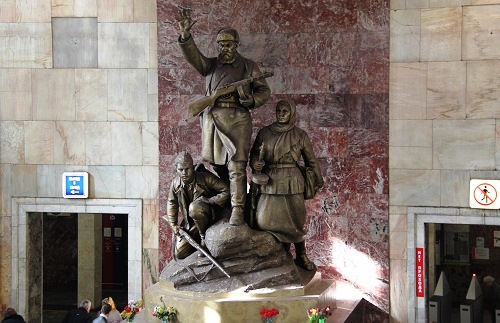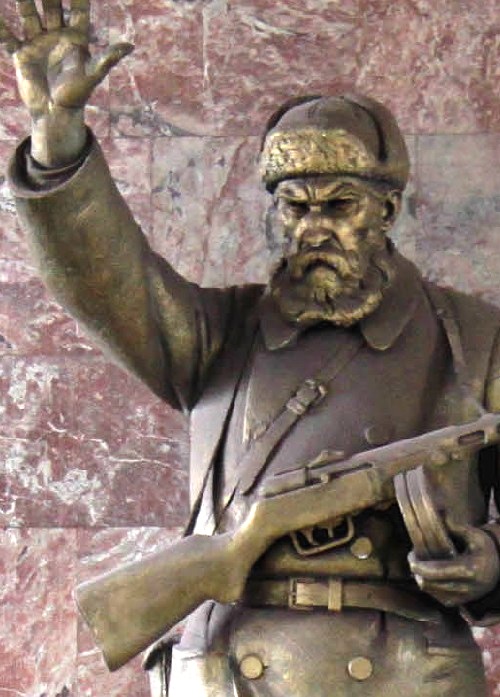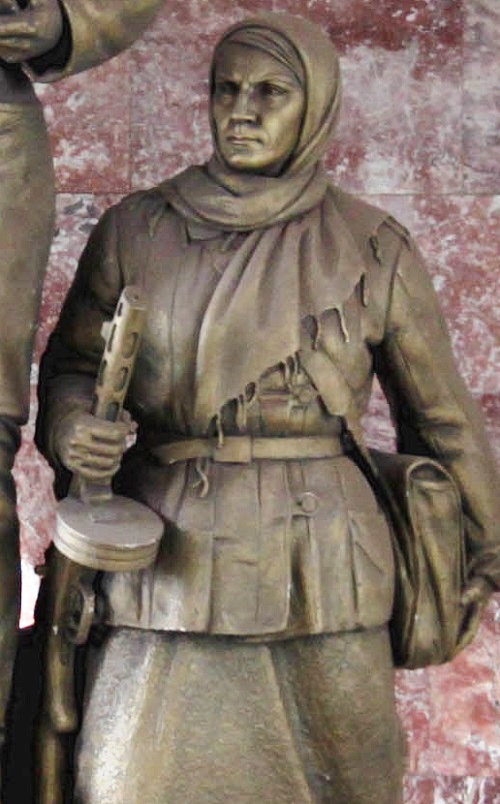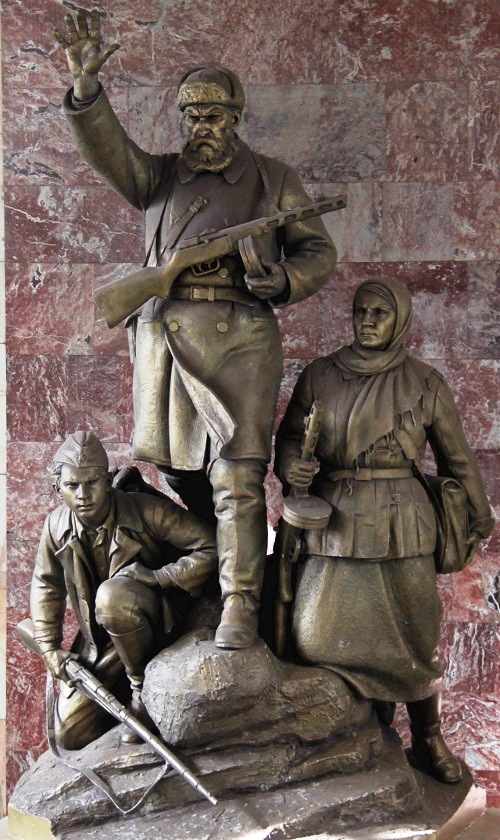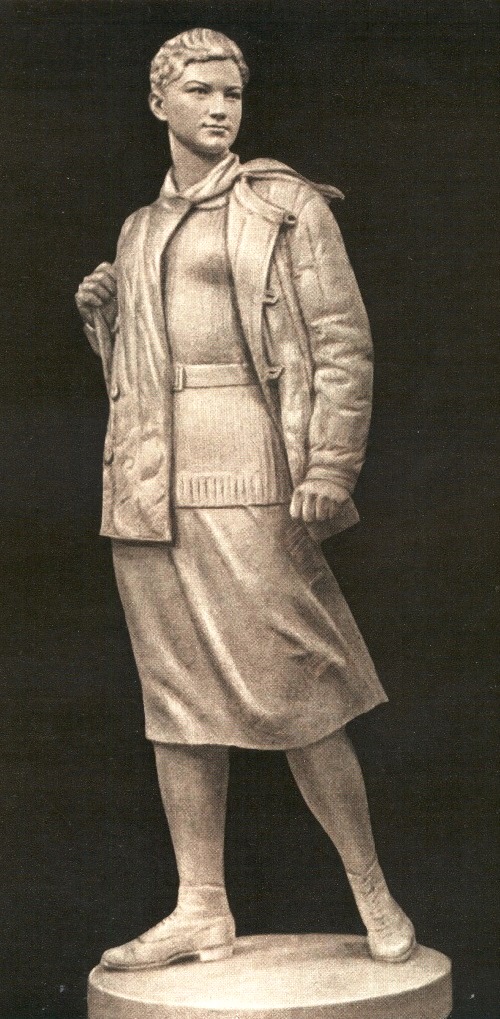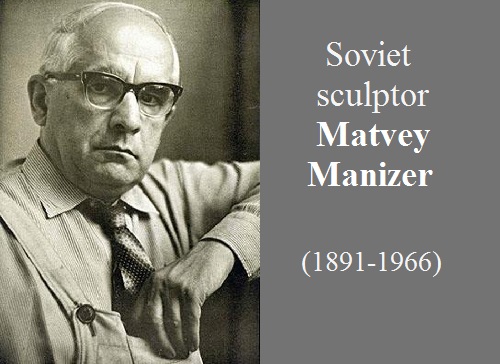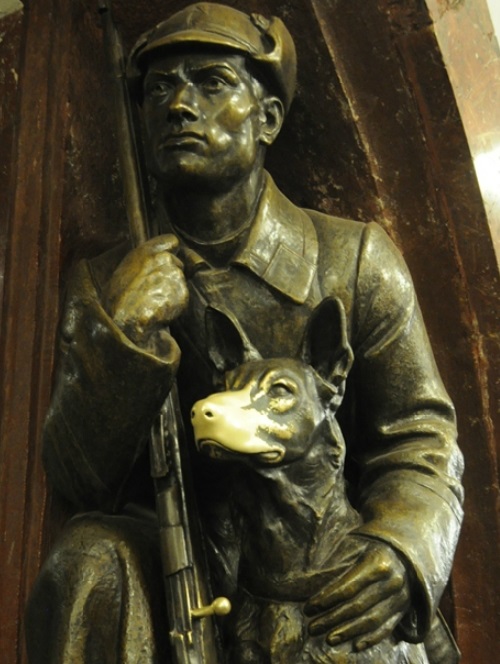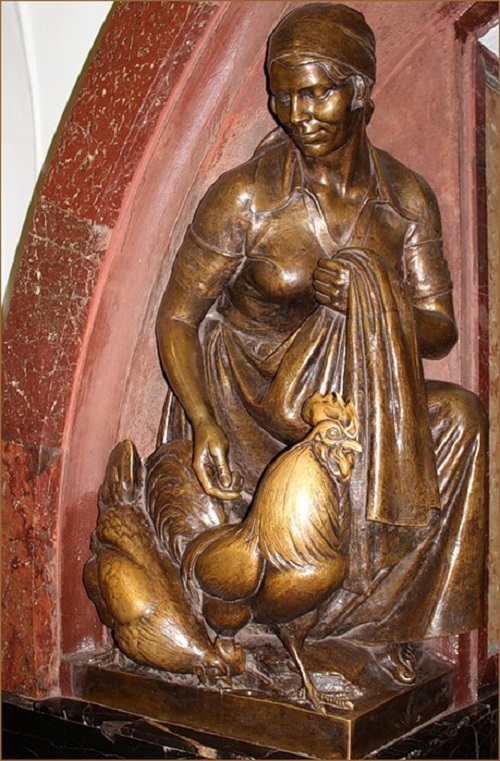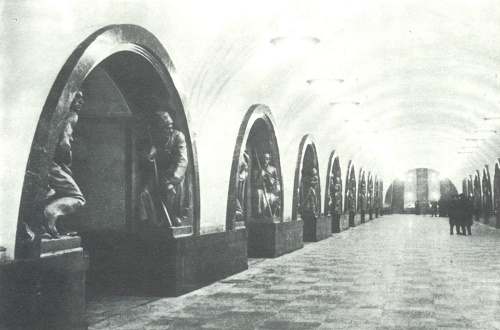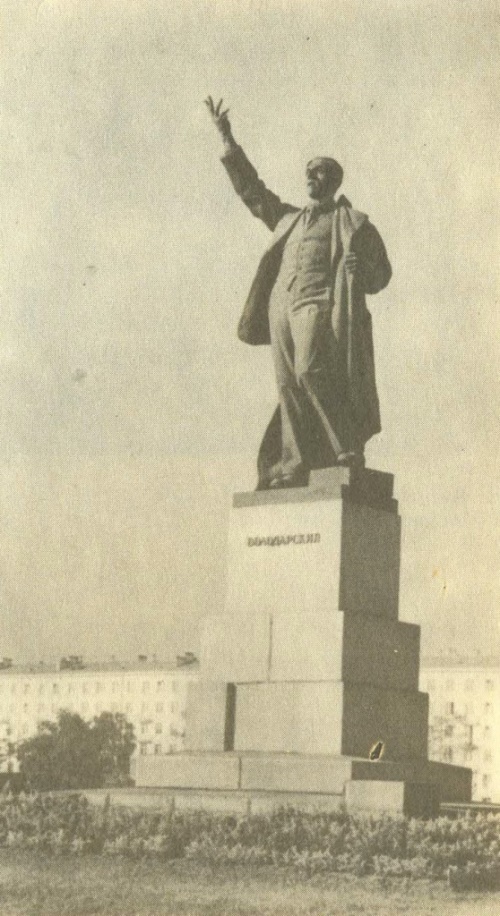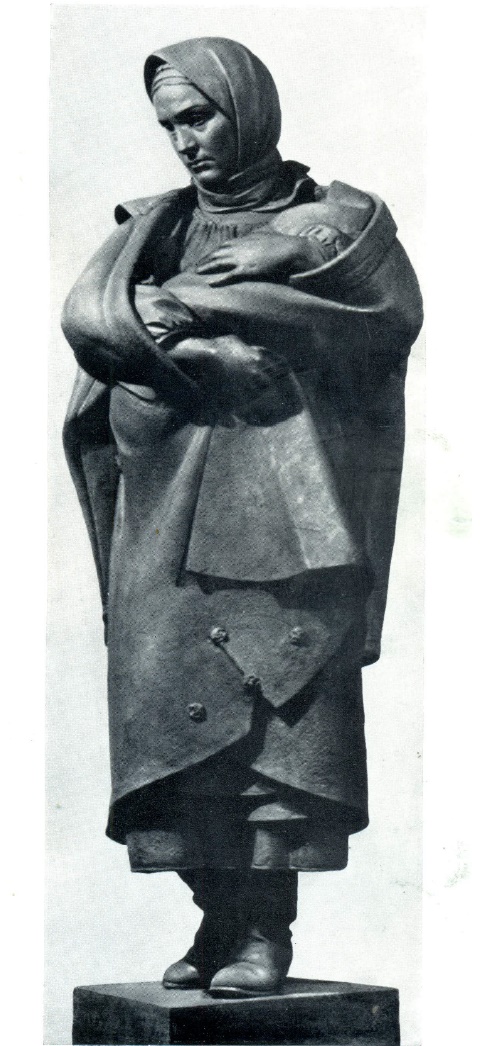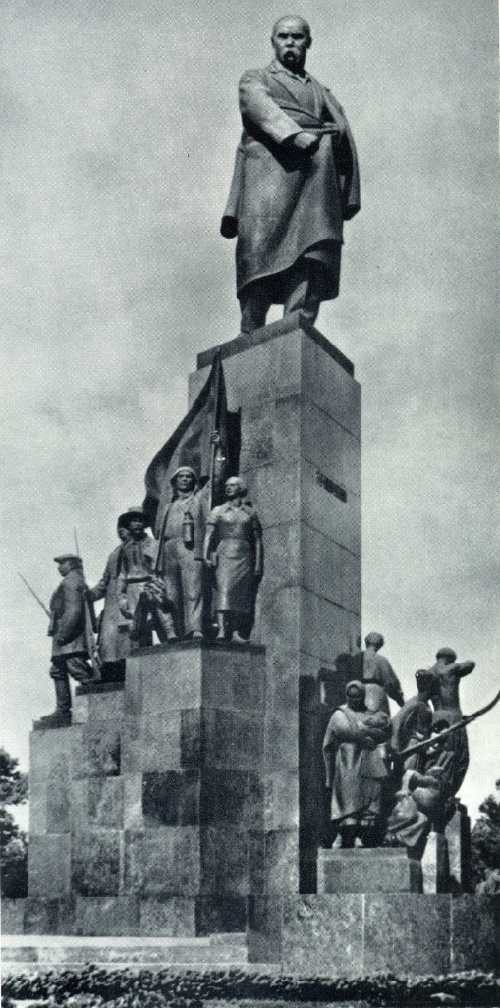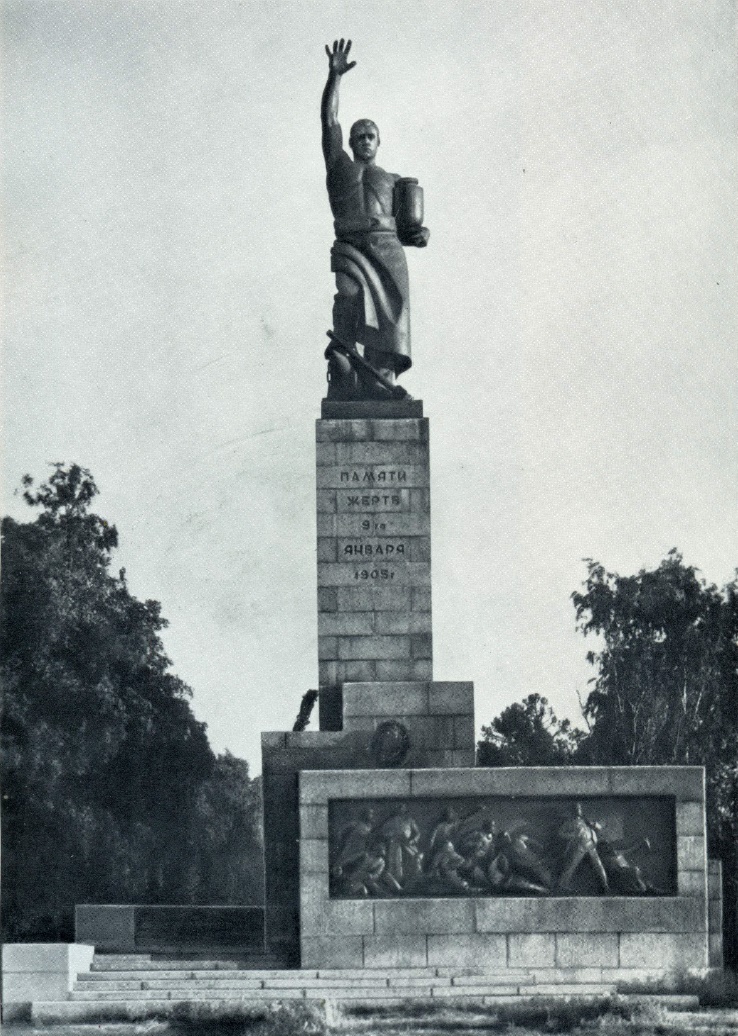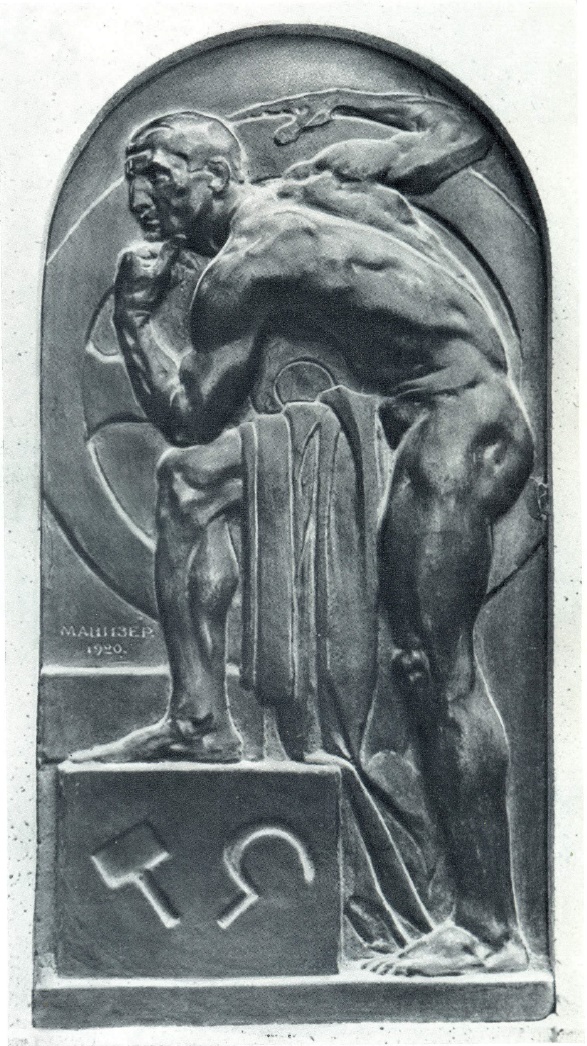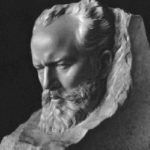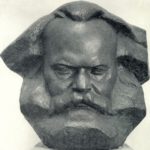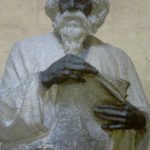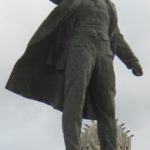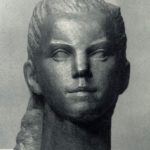Soviet sculptor Matvey Manizer
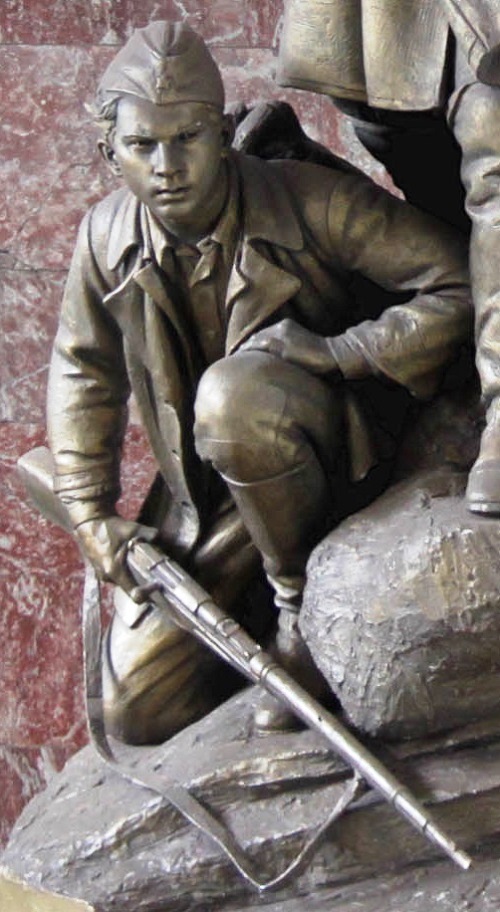
The sculptural group ‘partisans’ in the lobby of the metro station Partizanskaya, Moscow closeup. Soviet sculptor Matvey Manizer (1891-1966)
Works by Soviet sculptor Matvey Manizer (1891-1966) are well known to millions of people visiting Moscow. Frontier guard with a dog, woman with chicken, a young worker with a gear wheel, a revolutionary sailor, and dozens of other sculptures decorate the most famous Metro station “Revolution Square”. Soviet sculptor Matvey Manizer created them during 1936-1939. Matvey Manizer (1891-1966) – People’s Artist of the USSR (1958), Vice-President of the USSR Academy of Arts (1947-1966), the winner of three Stalin Prizes (1941, 1943, 1950). He created a number of works that have become classics of socialist realism. During the Great Patriotic War, in 1943 he donated the awarded Stalin Prize (the sum of 100 000 rubles) to the defense Fund. Soviet sculptor Matvey Manizer was the author of Stalin’s death mask.
Matvey Manizer was born 5 March 1891 in St. Petersburg in the family of the famous artist Henry Manizer. The son of the academic artist, M. Manizer adopted and continued the family tradition. He studied Art at School of Technical Drawing of Baron Alexander von Stieglitz (1908-09), and in the Academy of Arts (1911-16). Honed, but the cold academicism of his educational compositions of traditional classical themes set a seal on the mature work of sculptor.
A new theme gave the revolution. But mostly his artistic career will be marked by the projects of monuments, many of which are carried out in different cities of the country. Manizer has created more than a dozen monuments to Lenin, which became the official standard of the image of the leader of the revolution.
Three of the monument were dedicated to Taras Shevchenko in Kharkov (1935), surrounded by a dance of figures that illustrate the history of Ukraine, in Kiev and Kanev (both 1939). Among other works of the sculptor – monuments to V. Volodarsky (1925) and “victims of January 9, 1905” (1925-31) in Leningrad, VI Chapayev (1932) and VV Kuibyshev (1938) in Samara, Pavlov (1949) in Ryazan, Zoya Kosmodemyanskaya statue in the Tretyakov Gallery (1942), Pushkin relief in place of his last duel, the bas-relief “worker” in the Petrovsky Passage building in Moscow and others.
For many years, since 1921, Manizer engaged in teaching work at the Art Institute of Petrograd -Leningrad and Moscow. In 1966 he became vice-president of the USSR Academy of Arts. Soviet sculptor Matvey Manizer died on December 20, 1966. He was buried at Novodevichy Cemetery.
“Revolution Square” was built in March 1938, the second phase of construction of the Moscow Metro. Its designer was Alexey Dushkin. Located next to the Kremlin, Red Square, Mausoleum and the Central Museum of Vladimir Ilyich Lenin, it was to be honored architectural center of the capital of the USSR, reflected in its appearance greatness of revolutionary ideas. Pylons, separating two rows of the hall on the central platform and side, the architect designed in the form of low, rhythmically alternating arches forming the aisles to the platform.
As if echoing the color of the walls of the Kremlin, archivolt lined with dark red marble. Plinths under them covered with black. Slim figure relief lines diverge from the arch up to the sleek white arches, where hang rows of lamps. Angles of pylons Dushkin supposed to make as reliefs. In 1936, he invited the remarkable Soviet sculptor Matvey Manizer. Having got acquainted with the architecture of the station, instead of reliefs, he suggested set of sculptures, reflecting the development of our society from 1917 to the mid-thirties. The idea was bold and exciting: to show people in the decoration of the underground “palace of the people”. The three-year term with the help of students, Manizer created twenty pair of bronze figures and adorned with them cross passages.
Soviet sculptor Matvey Manizer

Soviet sculptor Matvey Manizer (1891-1966). Pioneers. Bronze. 1938. Revolution Square Metro Station, Moscow
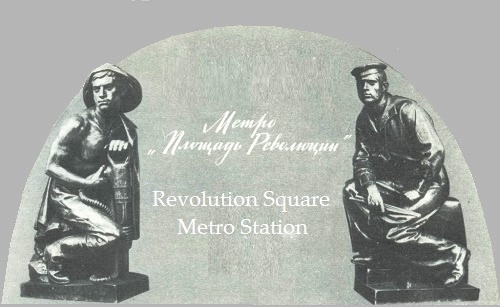
Soviet sculptor Matvey Manizer (1891-1966). Miner. Sailor. Bronze. 1938. Revolution Square Metro Station, Moscow
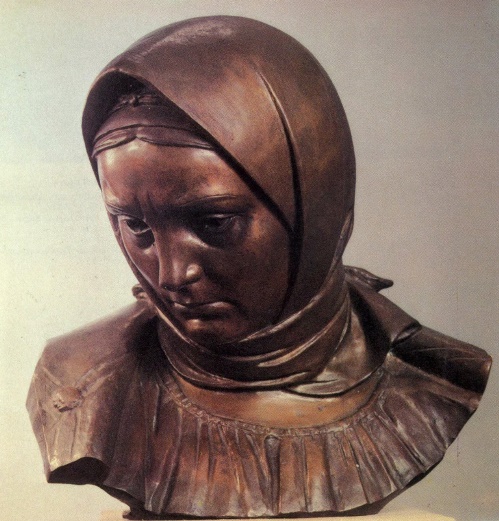
M.G. Manizer. Katerina. Fragment of figure in the sculptural composition of T.G. Shevchenko monument in Kharkov. 1935. Bronze
Sources: USSR magazines Soviet Union, Young Artist, Ogonyok
